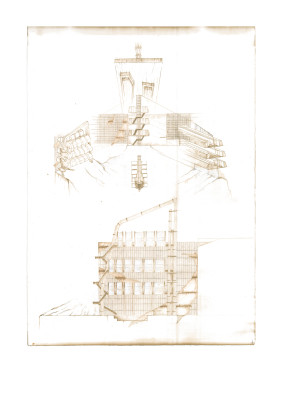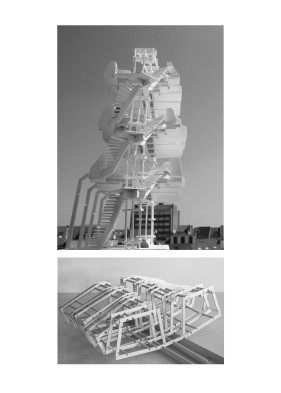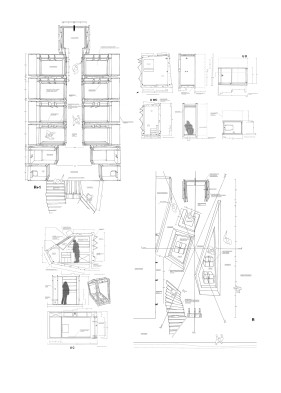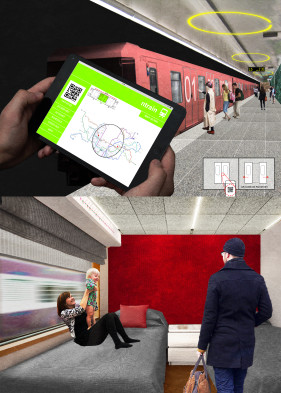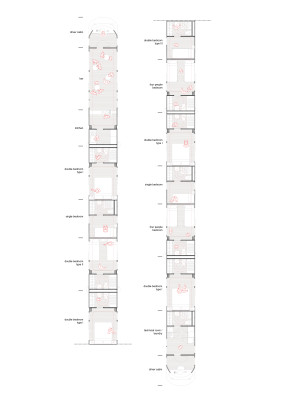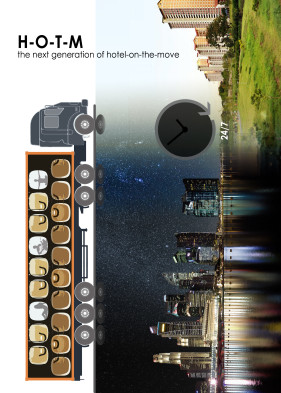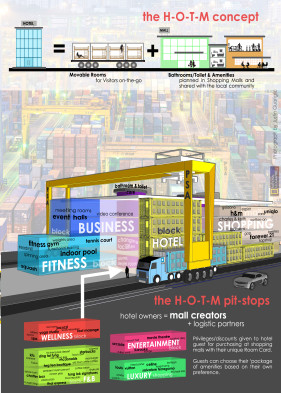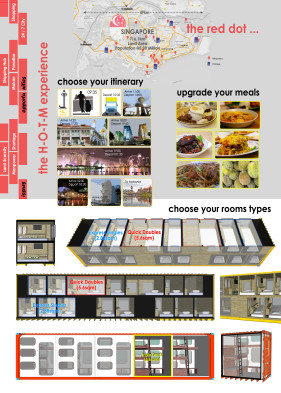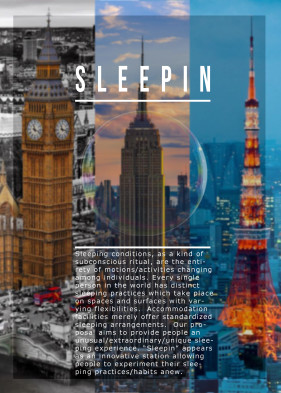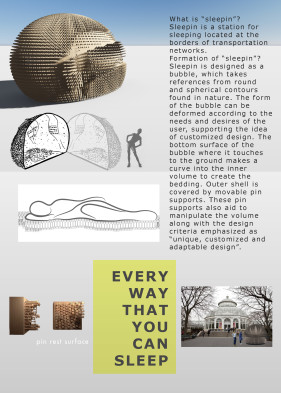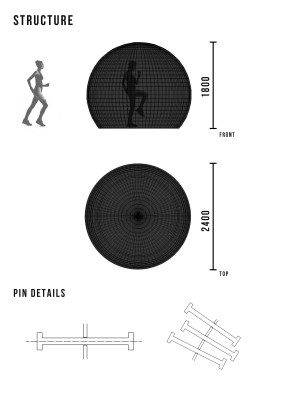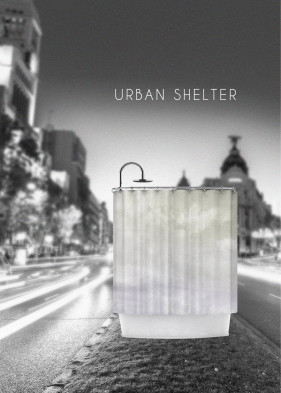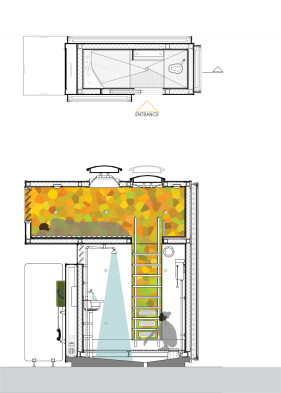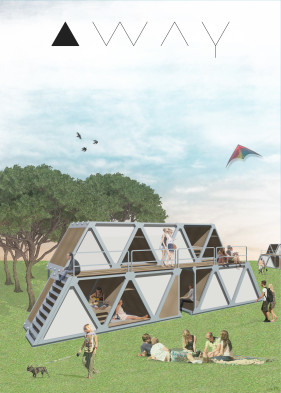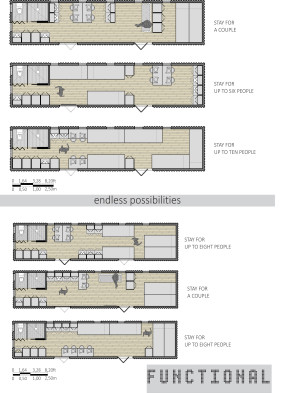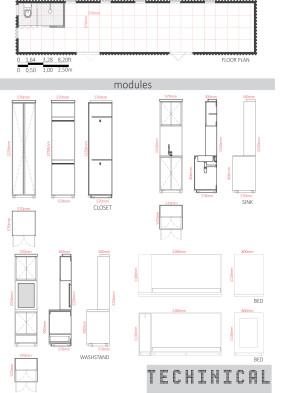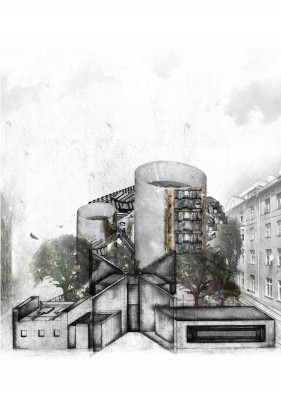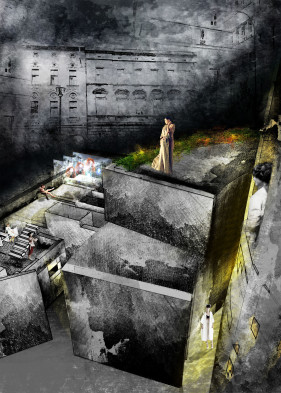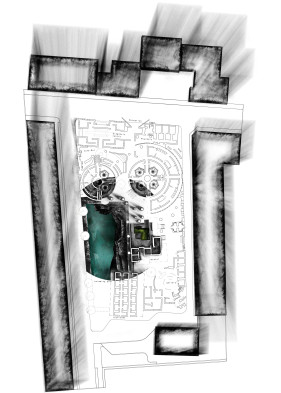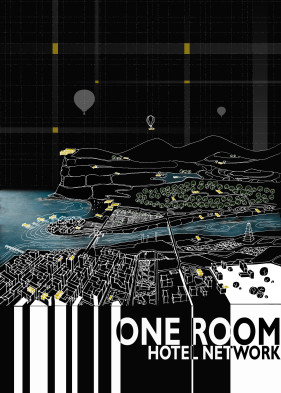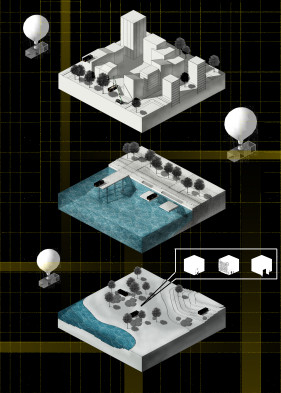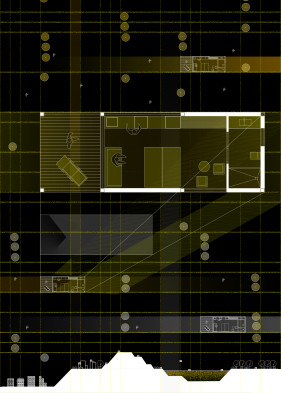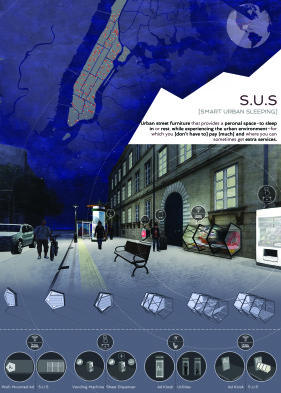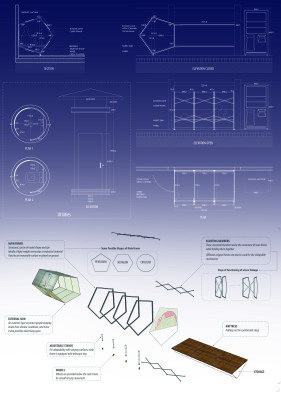TEAM: Andrea Settimi – Université libre de Bruxelles
THETA: or a hotel shelter.
«The inferno of the living is not something that will be; if there is one, it is what is already here, concrete. The inferno where we live every day, that we form by being together. There are two ways to escape suffering it. The rst is easy for many: accept the inferno and become such a part of it that you can no longer see it. The second is risky and demands constant vigilance and apprehension:
seek and learn to recognize who and what, in the midst of the inferno, are not inferno, then make them endure, give them space.»
Italo Calvino, “le città invisibili“.
The project to provide an urban refuge for the temporary accommoda- tion of every inhabitant of the “invisible city”.
Because we need to break up with every militant, politic or professional position which does not allow to act and to think again.
Because we need to break up with the myth of a permanent and global hotel solution, equally seen as both dream and nightmare. Because we need to ponder wide-range ways of experimentation, to act relent- lessly, to build for people, who are never completely resourceless. Because we need to mobilize law, economy and society to re ect upon new horizons of thinking and acting. Imagining exible, temporary and progressive, in embryo and remarkable responses, in order to face di- verse and complex, unique and urgent questions which are asked here and now. We need to nd the path of the “invisible hotels” in order to give them more and more place, as Italo Calvino would advise us to do.
The hotel claims to be a pragmatic and ephemeral, thus not infallible, response to the shelter crisis. A moveable structure which can host up to 16 beds, and which can be installed in any place needing a hosting structure, such as festivals, centres for urban refuge, etc. The project, due to its great pragmatic and repeatable capability, has been quite in uenced by the “Wiki-house” concept, a famous architectural open- source programme. A solid and reproducible project, conceived for an emergency deployment: a kind of hotel on a hypothetical (“Theta“) wasteland.

